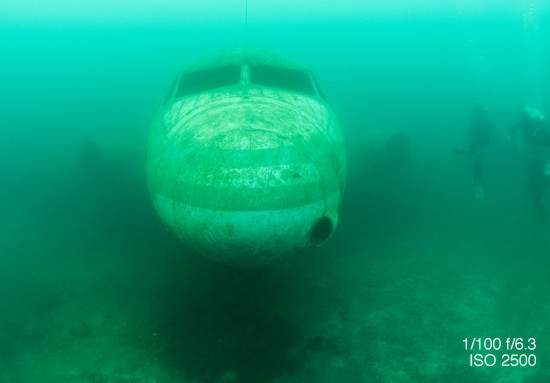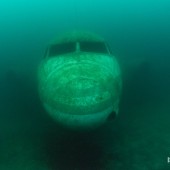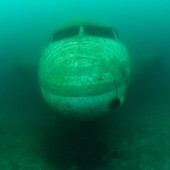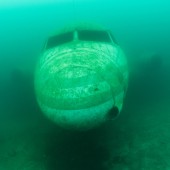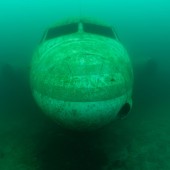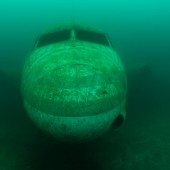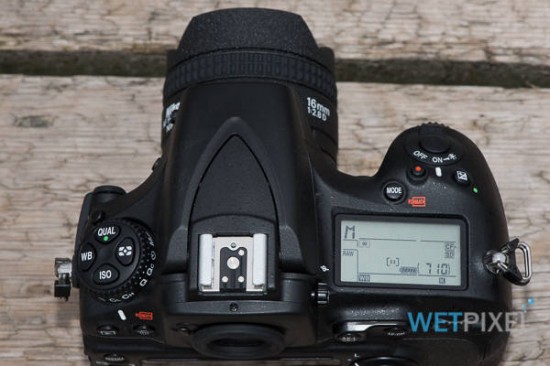
I am continuing the series of Nikon D810 guests posts with this D810 camera underwater review by wetpixel.com:

I was able to take a D810 to Mexico in late July to shoot the annual whale shark aggregation with the 2014 Wetpixel Whale Sharks expedition. For those of you not (yet!) familiar with underwater photography, in order to use an SLR underwater, we put them into a waterproof box, which has access to the camera’s controls and can be fitted with glass ports for the lens to view thorough. Often, there is some delay between the release of new camera models and the availability of housings for them. The housing manufacturers need time to both design and tool up for production of new models.
Hence in July, I used the D810 in a slightly modified Nauticam D800 II housing. It provided enough access to allow the camera to be used, although not full control.
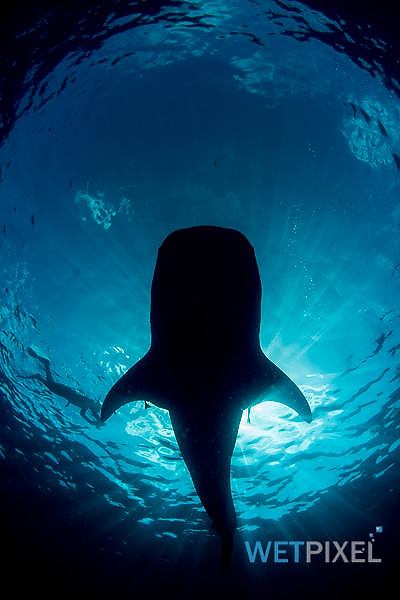
As all the photography at Isla Mujeres is done by free diving (holding your breath) as opposed to on scuba, so time to dive, compose and shoot is inherently limited! Hence, much of the shooting is done in Continuous Low drive mode. The D810 will shoot RAW images without filling its buffer for as long as you hold the trigger down in this mode. In fact, Adobe only released support for the camera in Lightroom during the trip, so I was forced to shoot RAW + JPG for the first few days, but even this did not cause any stuttering from the camera. It is (especially when compared with the D800) fairly fast.
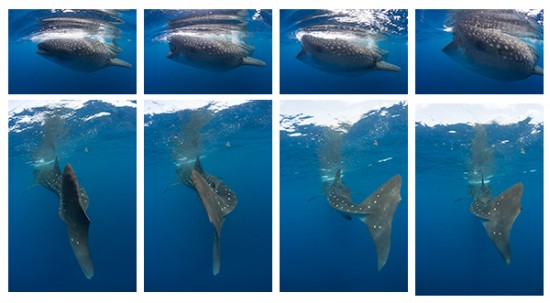
In common with many underwater photographers, I tend to use the AF ON button the rear of the camera to activate AF, rather than coupling the AF to the shutter release. By definition, the whale sharks are aggregating due to an abundance of food in the water, and if the focus is coupled to the shutter release, it can re focus on the particle son the water rather than the sharks.
Saying that, whale sharks are perhaps not the best test of a camera’s AF performance, but I was able to try it out on some small active fish hanging out in the saragassum weeds floating on the surface.
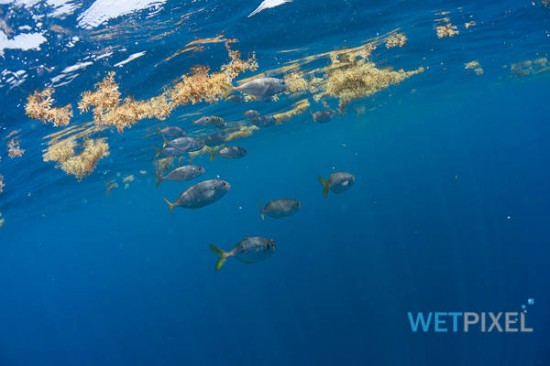
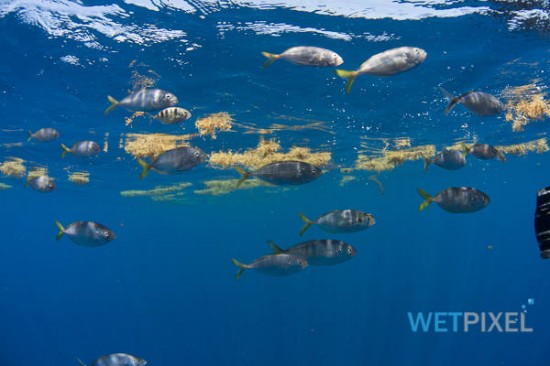
It will be interesting to challenge the new AF system with macro images. The Group AF setting may well be good for subjects that are moving around the frame.
One of the properties of water is its ability to absorb light as it passes through it. Hence light is always a challenge for underwater photographers. Underwater wide-angle photography has been revolutionized by the advent of a new generation of cameras that can supply clean images at very high ISO. The ability to maximise available light and hence maintain suitable exposure settings has allowed underwater photographers to pursue images that were not previously possible. This can allow for dramatic wide-angle images or to maintain shutter speeds to capture fast moving subjects in low light.
What constitutes an acceptable amount of noise in an image is a personal and artistic choice. Some images may creatively benefit from noise, whereas in others it may ruin an otherwise perfectly acceptable image. Most people found that the D800 provided a quite acceptable image at ISO1600 in terms of noise, and my testing with the D810 would suggest that it is as clean up to around ISO3200. It seems that the new sensor has gained about a stop of ISO performance.

For the sake of the test, I shot the camera from ISO400 all the way to ISO 10000, and whilst there was a lot of noise out beyond ISO 5000, the increase was uniform and linear, with no sudden degradation in image quality. This is reassuring as it means that when required, the camera can produce images at very high ISOs which, after post processing may be acceptable.
Lightroom 5 has a very effective shadows slider, which is adept at recovering detail from dark areas of the image. With many cameras however, excessive use results in a significant amount of noise. The D810 seems to provide remarkably clean results even when the slider’s use is pronounced:

Recovered detail in D810 images when using the shadows slider is remarkably clean.
Another challenge for underwater use is the tonal range inherent in an underwater scene. Th surface may well be almost directly into the sun, whereas the depths may well be black. One of the largest drawbacks for digital users underwater was its lack of tonal range. Traditional approaches to overcome this have been to use careful framing to avoid the extremes of exposure in a a scene or to shoot silhouettes that shield the sensor from the worst of the overexposure when shooting straight up towards the surface.
In my opinion, the D800 was the first digital camera that was capable of exposing direct sunbursts. Granted, it was important to monitor exposure settings carefully in order to do so, but it was possible. The D810 carries on in this tradition, with images shot directly into the sun producing remarkably clean images with little or no magenta haloing or greyed out areas in the sunball where the sensor simply cannot read data.
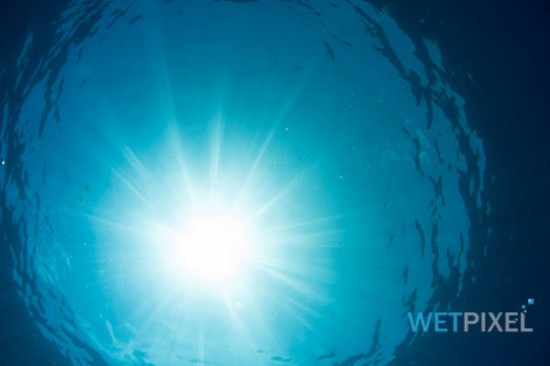

The new LCD screen is noticeably better. Image review is definitely easier, with sharper edges, especially when zoomed in. I look forward to be able to shoot video and stills using it.

Battery life is very good. Due to using it with a housing that meant that I could not access the ON/OFF switch, the camera stayed on throughout long days whilst in Mexico. Although I was not using any flash, I was shooting up to 700 images per day. I never managed to get the battery to use more than half its capacity!
###Conclusions (so far)
Testing so far seems to suggest that the D810 has remedied many of the issues that irked people about the D800. In particular, AF and speed/buffer seem much improved. The sensor exceeds the exceptional image quality of the D800/D800e, and adds better low light performance.
This is not a complete review of this camera’s underwater performance. Its AF performance will be much better tested shooting macro subjects, and metering will be more interesting/testing when using strobes.
###FTC notice:
The D810 was supplied by Ryan Canon at Reef Photo and Video and was purchased for the review. The NA-D800 II housing was kindly supplied by Edward and Jacqueline Lai of Nauticam via Alex Tattersall of Underwater Visions and purchased at a discount by the reviewer.
If you have an interesting idea for a guest post, you can contact me here.
